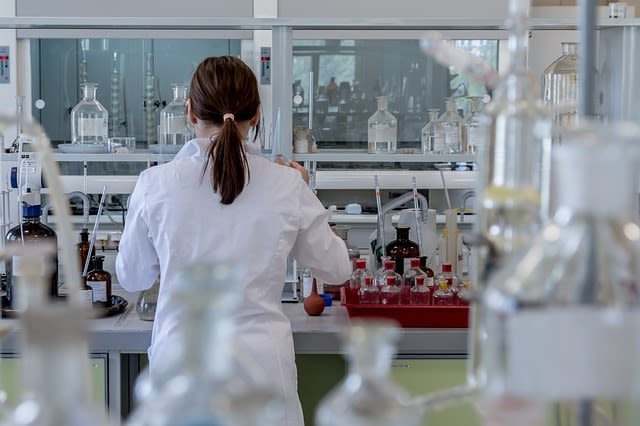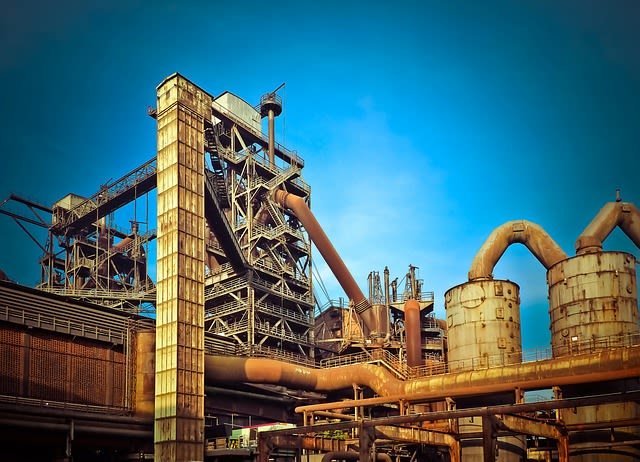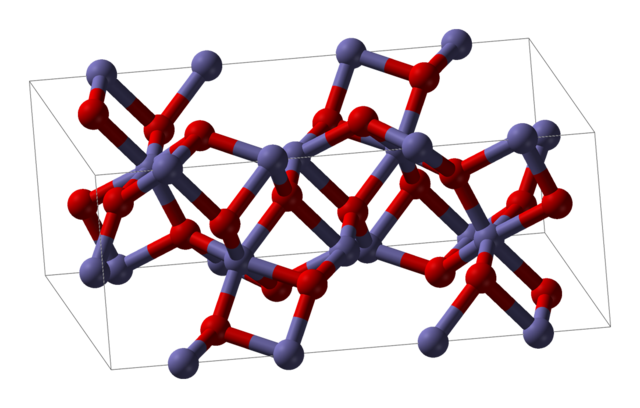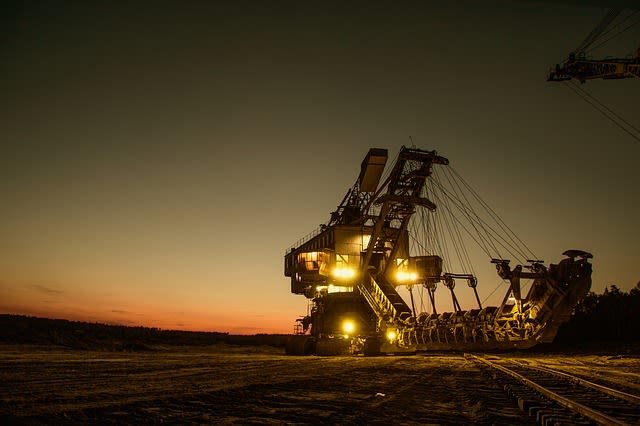Detailed Explanations on Reactions, Equations, Energy and Equilibria to a Layman.
Introduction: Steel manufacture and the Humber Bridge.
At its opening in 1981 the Humber Bridge was the largest single span suspension bridge in the world. It is now the tenth longest. It contains 27 500 tonnes of steel, all supplied by Corus (previously British Steel): 16 500 tonnes make up the deck section and 11 000 tonnes are in the cables that support it.

Each part of such a large construction needs a different type of steel with different properties to meet particular needs, which may include rigidity, flexibility, strength in tension and ease of being welded. The properties of steel depend on its composition. Steels contain a little carbon in the iron, and can include very small amounts of manganese, niobium, vanadium and titanium. Phosphorus and sulphur are impurities from iron ore that can make steel brittle. The number of times the steel sheet is rolled will also affect its final properties. It is the job of the metallurgist to obtain the balance of composition and treatment of the steel that suits a specific need. For a gas or oil pipeline, a low carbon content and some niobium and vanadium in the steel make a clean, strong weld that will not crack or leak while for reinforcing structures in buildings, more carbon gives steel greater rigidity and strength.
Laser welding is a great development in working with sheet steel. In conventional ‘oxyacetylene’ welding, the parts to be joined are heated extensively to melt and join the surfaces. Then, when the steel cools and shrinks, there is inevitably distortion at the join where the steel does not cool evenly. With laser welding, the beam is focused to a small spot that moves along the joint. Only the surfaces of the sheets are heated, very intensely and for a very short time, so the process avoids distortion and saves a great deal of money.

Nearly all the materials you touch, the polymers and dyes in clothes, the food on your plate, or the Paracetamol in the bathroom cabinet, have at some stage involved industrial chemists. This post will give you an insight into the world of the chemical industry. You will discover that organising the economics of a large manufacturing plant depends on understanding the chemistry of industrial processes.
Also, throughout this post you will find out more about chemical equations, the chemical reactions that they represent and how energy is transferred in reactions. You will also meet reversible reactions that can form dynamic equilibria.

CHEMICAL FORMULAE AND CHEMICAL EQUATIONS
Iron and steel have transformed the world around us in a way no other chemicals have. Think of their use in various means of travel – bridges, railways, cars, the Channel Tunnel and ships – in buildings such as skyscrapers, factories and warehouses, as well as in leisure products such as golf clubs and garden furniture.
Anyone fortunate enough to tour an iron- and steel-making plant comes away impressed by the large scale of it all. Yet the process is fairly simple and uses only four major raw materials: iron ore, coal (made into coke), limestone and air. The principles of iron making have not changed much since Roman times, so where does the chemist fit in today? Chemists have the best understanding of the manufacturing process, so they can, for example, calculate the exact amounts of raw materials required and advise on the best reaction conditions. Later in this post, you can read about the role of chemists in optimising the efficiency of processes, controlling the properties of steels, understanding reactions in equilibrium and avoiding industrial pollution.

In the blast furnace, coke, which is carbon, reacts with air to produce carbon monoxide. This can be represented by a word equation:
Carbon + oxygen → carbon monoxide
However, it is more convenient and much more informative to use formulae in an equation. A molecular formula tells you how many atoms of each element there are in a molecule of the compound. Oxygen has two atoms per molecule: O2. But not all substances are made up of molecules. For example, sodium chloride is a giant lattice made up of sodium and chloride ions. For these it is more correct just to use the term formula or formula unit. So the equation could be written:
C + O2 → CO
But this equation is unbalanced. There are more oxygen atoms on the left side of the equation than there are on the right, where one atom of oxygen has ‘disappeared’. Atoms are not made or destroyed in chemical reactions, and in any chemical equation the number of atoms of each element must be the same on both sides. This makes for a balanced equation.
It would be simple to balance the equation above by making CO into CO2. But this changes the chemical carbon monoxide into carbon dioxide, a different gas with completely different properties. Instead, the balanced equation for the reaction is:
2C + O2 → 2CO
Chemical equations often include state symbols. These show the physical state of the reactants, usually at room temperature. So this equation may be written:
2C(s) + O2(g) → 2CO(g)
where (s) means the solid state and (g) means the gaseous state. Two other state symbols are: (l) which means the liquid state; and (aq) which means the substance is dissolved in water to form an aqueous solution.
EXAMPLE
Question: One type of iron ore is haematite. The chemical name for haematite is iron(III) oxide and its formula is Fe2O3. When haematite reacts with carbon monoxide in the blast furnace, carbon dioxide and iron are produced.
Work out the balanced equation for this reaction.
Answer: Step 1: Write the word equation:
iron(III) oxide + carbon monoxide → iron + carbon dioxide
Step 2: Change the words into formulae:
Fe2O3 + CO → Fe + CO2
Step 3: Balance the equation by making the number of atoms of each element the same on both sides and add state symbols. (Remember that the formulae are fixed.)
Fe2O3(s) + 3CO(g) → 2Fe(s) + 3CO2(g)
As you get used to balancing equations, you will probably do these steps in your head.

Haematite unit cell. Public Domain, Benjah-bmm27
RELATIVE ATOMIC MASS
The masses of different atoms can be compared using the relative atomic mass scale, also called the Ar scale (r stands for ‘relative’), On this scale, the isotope carbon-12 is given an Ar of exactly 12. The isotope carbon-12 is the standard and the Ar values of all other atoms are measured relative to this standard. Most elements exist as two or more isotopes and the Ar is an average of the masses of all these different isotopes taking into account the percentages in which they occur naturally. This leads to the definition:
Relative atomic mass of an element is the average mass of the atom (taking into account all of its isotopes and their abundance) compared to 1/12 the mass of one atom of carbon-12.
Historically, the standard for the Ar scale was hydrogen. As the lightest element, it was given an Ar of 1. Carbon-12 is now used because it is easier to handle than gaseous hydrogen and is an abundant isotope. The table below shows some approximate relative atomic masses. Notice in the table that the relative atomic masses have no units. The relative atomic mass just shows how many times heavier one atom is compared to another. So one atom of silicon is 28 times heavier than one atom of hydrogen, and calcium atoms are twice as heavy as neon atoms.
A table showing the approximate relative atomic masses of some elements
| Element | Symbol | Relative atomic mass, Ar |
| Hydrogen | H | 1 |
| Carbon | C | 12 |
| Oxygen | O | 16 |
| Neon | Ne | 20 |
| Silicon | Si | 28 |
| Sulphur | S | 32 |
| Calcium | Ca | 40 |
| Iron | Fe | 56 |
| Copper | Cu | 64 |
AMOUNTS AND THE MOLE
When chemists use the word amount, they are talking about the number of particles in a substance. The particles can be atoms, molecules, ions, electrons, etc. Amount may also mean other things, for instance the mass of a substance, which has units of grams or kilograms. To describe the amount of something such as eggs. You would probably use the unit dozens. When chemists talk about the amount of substance they use the unit moles.
The Ar of copper is 64, and so each copper atom is twice as heavy as a sulphur atom. Imagine that 64 grams of copper and 64 grams of sulphur (Ar of 32) are weighed out. The mass of each substance is the same, but to a chemist the amount of each substance is very different: 64 grams contains twice as many sulphur atoms as copper atoms: there is double the amount of suphur atoms.
Using relative atomic masses, you can work out amounts of atoms or molecules in different masses of substances. Weigh out 32 grams of sulfur, and you have the same number of atoms as there are in 64 grams of copper. Also, weigh out the relative atomic mass in grams of different elements, and you are weighing the same amount of atoms each time. This amount is called the mole: The relative atomic mass in grams of any element contains one mole of atoms. The mole is a unit in the same way that the gram is a unit. The shortened form of the mole unit is mol. (Care: this is not short for molecule!) This is its definition:
One mole is the amount of substance that contains as many particles as there are atoms in exactly 12 g of carbon-12.
These are some examples:
The amount of atoms in 32 g sulphur is 1 mol. In 32 g of copper there is 0.5 mol of copper atoms. 32 g of oxygen atoms is 2 mol of oxygen atoms.
To work out how many moles of atoms are in a particular mass of substance, use this equation:
Amount in moles = mass in grams / mass of one mole (in grams)
EXAMPLE
- How many moles are there in 56 g silicon?
Amount in moles = mass in grams / mass of one mole (in grams)
Moles of silicon = 56 g / 28 g = 2 moles
- What is the mass of 0.25 mol of iron?
Mass in grams = amount in moles × mass of 1 mole
mass of iron = 0.25 mol × 56 g = 14 g.
One mole of substance is 6.02 × 1023 particles. This is a very large amount of atoms or molecules to try and imagine. It is so large that even all the sand grains around the whole coastline of the British Isles do not make a mole. The number of atoms or molecules in one mole is called the Avogadro constant, L, sometimes also given the symbol NA.
RELATIVE MOLECULAR MASS
We know that carbon dioxide is made up of molecules each with the molecular formula CO2. Fe2O3 is the formula unit of iron(III) oxide. It is not a molecular formula because this compound is not made up of separate molecules. Most equations that chemists deal with involve either molecules or formula units.
The relative molecular mass, Mr, is calculated using the relative Atomic mass scale. Again, we use the standard carbon-12 as a comparison for the masses of molecules or formula units. Suppose we want to find the Mr of carbon dioxide.
The Mr of CO2 = Ar of C + ((Ar of O) × 2)
= 12 + (16 × 2) = 44
The Mr of Fe2O3 = ((Ar of Fe) × 2 + ((Ar of O) × 3)
= (56 × 2) + (16 x 3) = 160
In this case, the Mr refers to the formula Fe2O3 and is called the relative formula mass
During this series of post, you will come across many formulae with brackets, for example, Ca(OH)2.
Notice that the particles in Ca(OH)2 are ions and have positive and negative charges. The charges on ions do not affect their Ar values.
So:
Mr of Ca(OH)2 =Ar of Ca + 2 × (Ar of O + Ar of H)
= 40 + 2 × (16 + 1)
= 40 + 2 × 17 = 74
USING EQUATIONS IN INDUSTRY
We have seen that the chemical formula CO means that 1 molecule contains 1 atom of carbon combined with 1 atom of oxygen. It also means that 1 mole of carbon atoms is combined with 1 mole of oxygen atoms. This is sometimes called the stoichiometric ratio. In the equation for the reaction of coke in the blast furnace:
2C + О2 → 2CO
This means:
2 atoms C + 1 molecule O2 → 2 molecules CO
If instead of 2 atoms of carbon we had 2 million atoms, then:
2 million C atoms + 1 million O2 molecules → 2 million CO molecules
We now use moles:
2 mol carbon atoms + 1 mol oxygen molecules → 2 mol carbon monoxide molecules
The carbon monoxide formed in the blast furnace reduces (removes oxygen from) the iron(III) oxide to iron:
Fe2O3(s) + 3CO (g) → 2Fe(s) + 3CO2(g)
So: 1 mol Fe2O3 + 3 mol CO → 2 mol Fe + 3 mol CO2
Now that we know the amounts of the chemical substances in this equation, we can work out the masses of the substances involved using the Ar scale.
The mass of 1 mol of Fe2O3 is (56 × 2) g + (16 × 3) g = 160 g
The mass of 1 mol of CO is 12 g 16 g + 16 g = 28 g
The mass of 1 mol of Fe is 56 g = 56 g
The mass of 1 mol of CO2 is 12 g + (16 × 2) g = 44 g
To work out the masses of substances involved in converting 160 g of iron(III) oxide to iron, we can use the following steps:
Step 1: Write the balanced equation:
Fe2O3(s) + 3CO(g) → 2Fe(s) + 3CO2(g)
Step 2: Convert the equation to amounts:
1 mol Fe2O3 + 3 mol CO → 2 mol Fe + 3 mol CO2
Step 3: Work out the amount being used:
Moles of Fe2O3 in 160 g = mass in grams / mass of one mole (in grams) = 160 / 160 = 1 mol
Step 4: Scale the amounts in the equation:
In this case, only 1 mol Fe2O3 is used, so the amounts do not need to be scaled.
1 mol Fe2O3 + 3 mol CO → 2 mol Fe + 3 mol CO2
Step 5: Convert amounts (moles) to masses:
160 g Fe2O3 + 3 × 28 g (= 84 g) CO → 2 × 56 g (= 112 g) Fe + 3 × 44 g (= 132 g) CO2
So, from 160 g of Fe2O3, in theory 112 g of iron could be produced and 132 g of carbon dioxide given off.
In the iron and steel industry, amounts this size are ridiculously small. A typical blast furnace can produce up to 10 000 tonnes a day of molten iron. Extraction of a metal from its ore always includes a reduction reaction, because many metal ores contain oxygen.

Suppose we now want to find out how much iron can be produced from 10 tonnes of iron(III) oxide. We can still use the same method. The first step is identical, so we can start at Step 2
Step 2: Convert the equation to amounts:
1 mol Fe2O3 gives 2 mol Fe
Note: In this example we do not need to know the moles of CO or CO2.
Step 3: Work out the amount being used (1 tonne 1 000 000 g):
Moles of Fe2O3 in 10 tonnes = mass in grams / mass of one mole (in grams)
= 10 000 000 g / 160 g = 62 500 mol
Step 4: Scale the amounts in the equation:
1 mol Fe2O3 produces 2 mol Fe
62 500 mol Fe2O3 produces 125 000 mol Fe
Step 5: Convert amount (moles) of Fe to a mass:
125 000 mol × 56 g = 7 000 000 g
= 7.0 tonnes of Fe (to two significant figs)
To be continued..............
Thanks for reading.
REFERENCES
Chemical-formula-and-equations.htm
Chemical-reactions-stoichiome/balancing-chemical-equations/
Atomic-number-atomic-mass-and-isotopes-article
https://en.wikipedia.org/wiki/Mole_(unit)
Avogadros-number-and-the-mole/
http://www.docbrown.info/page04/4_73calcs02rfm.htm
https://en.wikipedia.org/wiki/Molecular_mass
https://en.wikipedia.org/wiki/Stoichiometry
This post has been voted on by the SteemSTEM curation team and voting trail. It is elligible for support from @curie and @minnowbooster.
If you appreciate the work we are doing, then consider supporting our witness @stem.witness. Additional witness support to the curie witness would be appreciated as well.
For additional information please join us on the SteemSTEM discord and to get to know the rest of the community!
Thanks for having used the steemstem.io app and included @steemstem in the list of beneficiaries of this post. This granted you a stronger support from SteemSTEM.
Congratulations @empressteemah! You have completed the following achievement on the Steem blockchain and have been rewarded with new badge(s) :
You can view your badges on your Steem Board and compare to others on the Steem Ranking
If you no longer want to receive notifications, reply to this comment with the word
STOPVote for @Steemitboard as a witness to get one more award and increased upvotes!